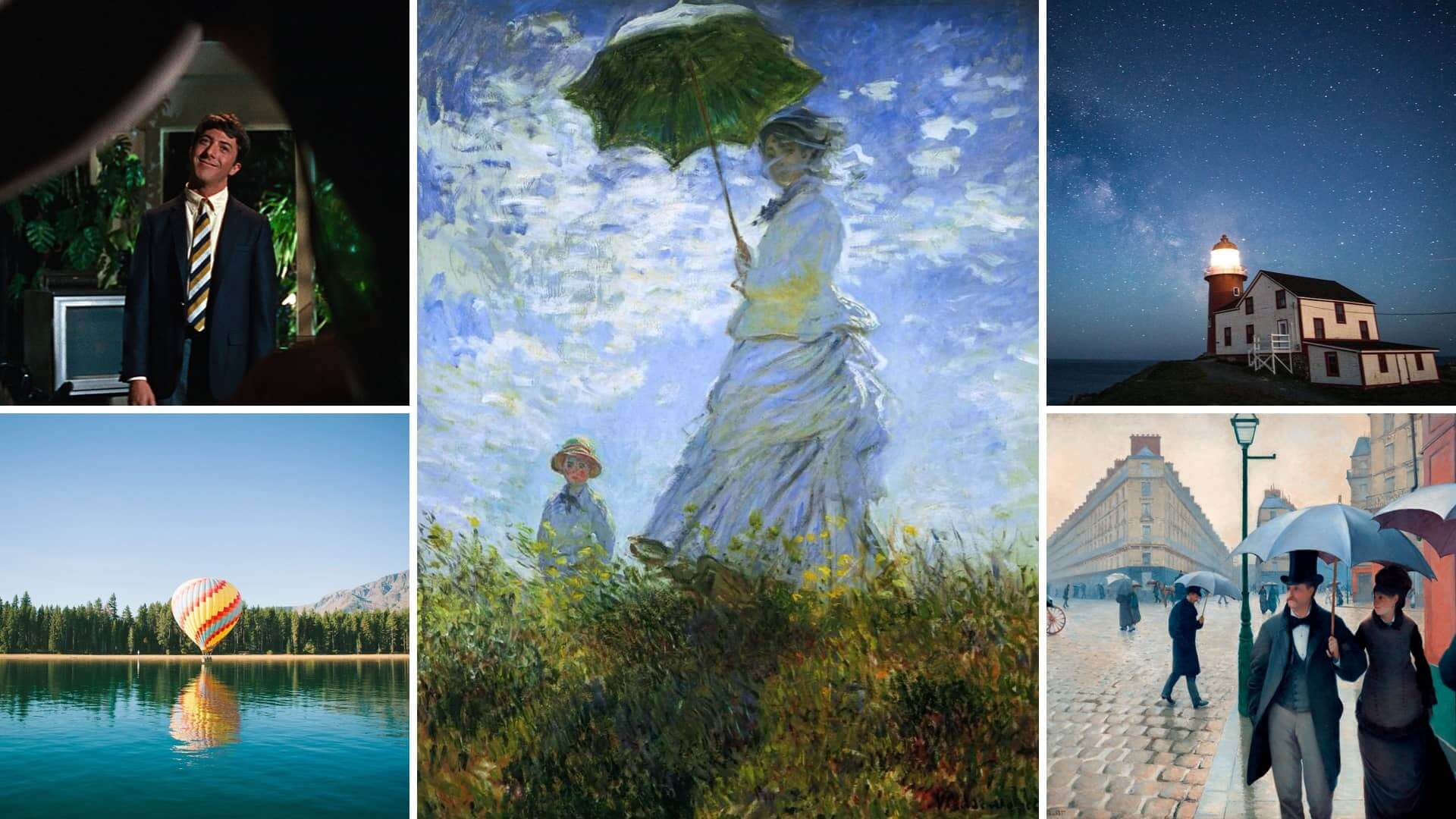Countless great artworks employ the use of focal points, and this is no coincidence. A focal point is an essential element in art that guides the viewer’s eye toward a specific area of interest within the piece. It serves as a visual anchor and helps to create balance, depth, and emphasis within the composition. In this article, we will explore the importance and impact of focal points in art and how they contribute to creating a captivating visual experience for the viewer.
What is a Focal Point in Photography?
First, let’s define focal point
The importance and impact of a focal point in art cannot be overstated, as it plays a crucial role in guiding the viewer's gaze and conveying the artist's intended message. Understanding what these points are and how they work is key to appreciating its significance in art.
FOCAL POINT DEFINITION
What is a focal point in art?
In the realm of visual arts, a focal point is a specific spot, area, or element that catches the viewer's attention. It's the part of an artwork that stands out from the rest, either due to its color, size, shape, or a combination of these traits. It's usually the first place that the viewer's eye is drawn to when they look at a piece of art. This powerful tool, if used effectively, can strongly influence the viewer's perception and interpretation of the artwork.
What is a focal point in art used for?
- Guides viewer's perception
- Enhances artistic expression
- Creates visual balance
- Highlights key elements
What is a Focal Point Used For in Art?
The importance of a focal point in art
A focal point in a piece of art is not just an aesthetic tool; it serves multiple roles, each contributing to the overall impact of the artwork.
Guiding the Viewer's Eye
The primary function of these points is to guide the viewer's eye, just like how a lighthouse captures attention in a vast seascape or how a leading line directs the gaze in a photograph. It acts as a starting point, setting the viewer on a visual journey through the artwork.
A well-defined point, such as a prominent figure or an intense burst of color, captures attention and then leads the eye around the piece, ensuring that the viewer appreciates all the elements that the artist wants to highlight. In essence, it provides a roadmap for the viewer's gaze.
For example, where are your eyes drawn to in Edward Hopper's "Nighthawks"?
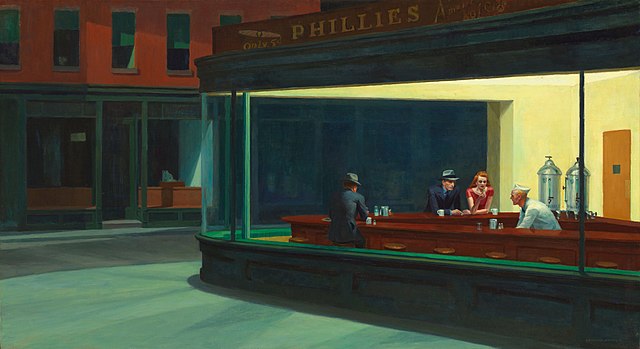
Nighthawks by Edward Hopper
Establishing Mood and Conveying Meaning
The focal point plays a crucial role in establishing the mood and conveying the meaning of the artwork. A dimly lit street in a film noir sets a mysterious and suspenseful atmosphere. Likewise, an artist strategically places and designs a focal point to evoke specific emotions or to communicate a particular message.
Enhancing Visual Appeal
In addition to guiding the viewer's eye and conveying meaning, a focal point enhances the visual appeal of the artwork. It creates a sense of balance and harmony, preventing the viewer's gaze from being scattered randomly across the piece.
A well-composed photograph might use the rule of thirds or the golden ratio to position the main subject in an aesthetically pleasing way. Similarly, a strong point allows other elements in the artwork to play supporting roles, creating a cohesive and visually pleasing composition.
This is seen throughout some of cinema’s greatest cinematography as we breakdown in the video below.
Ultimate Guide to Film Composition & Framing • Subscribe on YouTube
Communicating Ideas and Emotions
Lastly, artists use focal points as a medium to communicate their ideas and emotions. Through the careful selection and manipulation of colors, shapes, sizes, and textures, artists can make the focal point express specific sentiments or thoughts.
For instance, a vibrant and saturated focal point in a painting can evoke a sense of joy and excitement, while a desaturated and blurry focal point may convey a feeling of melancholy or nostalgia.
As you can see, a focal point is a powerful tool that artists wield to make their inner world tangible to the viewer. Let’s look at the techniques artists use to create focal points in their work.
Related Posts
Focal Point Examples
Techniques for creating a focal point
Creating a focal point can be done in more than one way. Various components can contribute to its creation depending on the medium an artist is working with. Let's discuss some of the techniques artists use to do this.
Use of Color, Contrast, Size, and Placement
Color and contrast are two of the most powerful tools in an artist's arsenal. A vibrant, unique color or a stark contrast between light and dark can immediately draw the eye. Similarly, a larger element in the artwork naturally attracts attention.
For example, Claude Monet uses all of these in the painting "Woman with a Parasol - Madame Monet and Her Son." In the painting, Madame Monet and her son are bathed in sunlight, surrounded by a field of vibrant and varied colors. The focal point is created by the strong contrast between the light, pastel colors of the figures and the darker, more subdued tones in the surrounding environment.
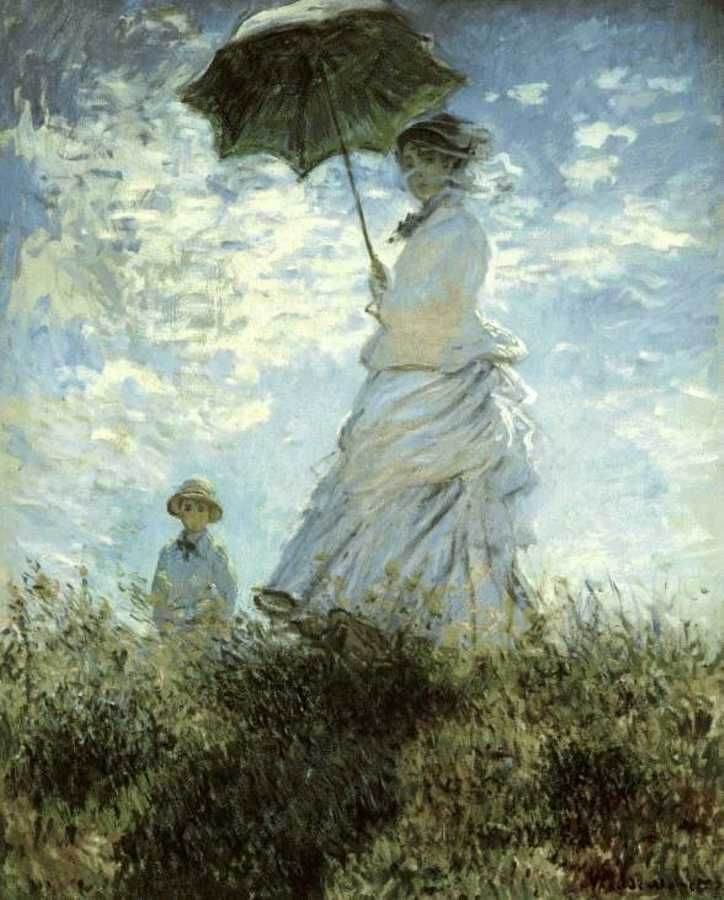
“Woman with a Parasol • Madame Monet and Her Son" by Claude Monet
The white parasol held by Madame Monet, in particular, stands out against the colorful background, directing the viewer's gaze to the mother and child. The varying scale of the subjects also draws our eye where Monet intends.
Placement also plays a crucial role. The rule of thirds, a common principle in visual arts, suggests placing the focal point off-center for a more dynamic composition.
Use of Lines and Shapes
Lines and shapes can be used to guide the viewer's eye towards the focal point. Converging lines, circles, or other geometric shapes can all be used to highlight the focal point.
Consider the iconic image from the movie The Graduate. Dustin Hoffman's character is framed by the crooked angle of Mrs. Robinson's leg. The lines and shapes lead our eyes directly to him, making him the focal point of the scene.
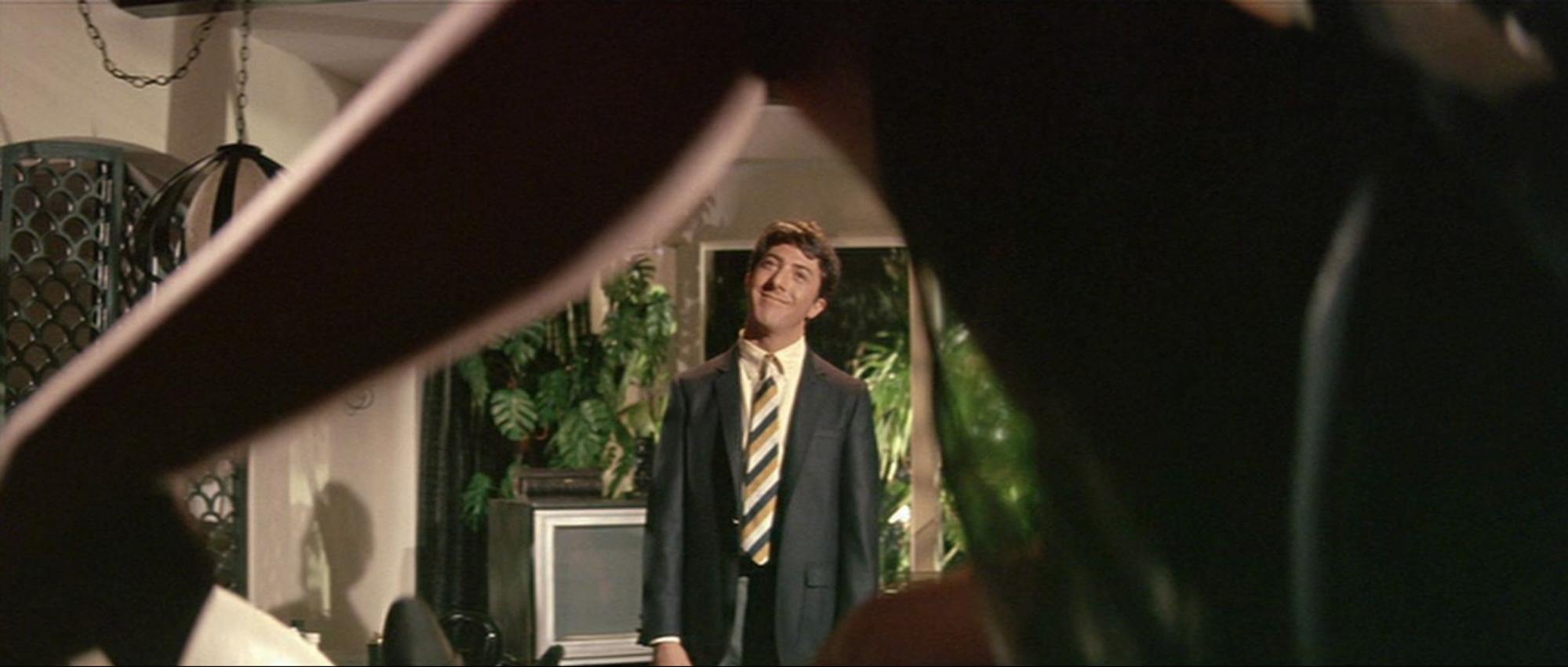
The Graduate
Incorporating Texture and Pattern
Texture and pattern can also create a focal point. A unique texture or pattern amidst a uniform background can stand out and attract the viewer's attention.
For instance, in Grant Wood's American Gothic, the detailed, textured pattern on the woman's apricot stands out against the simpler textures in the rest of the painting, drawing the viewer's attention.
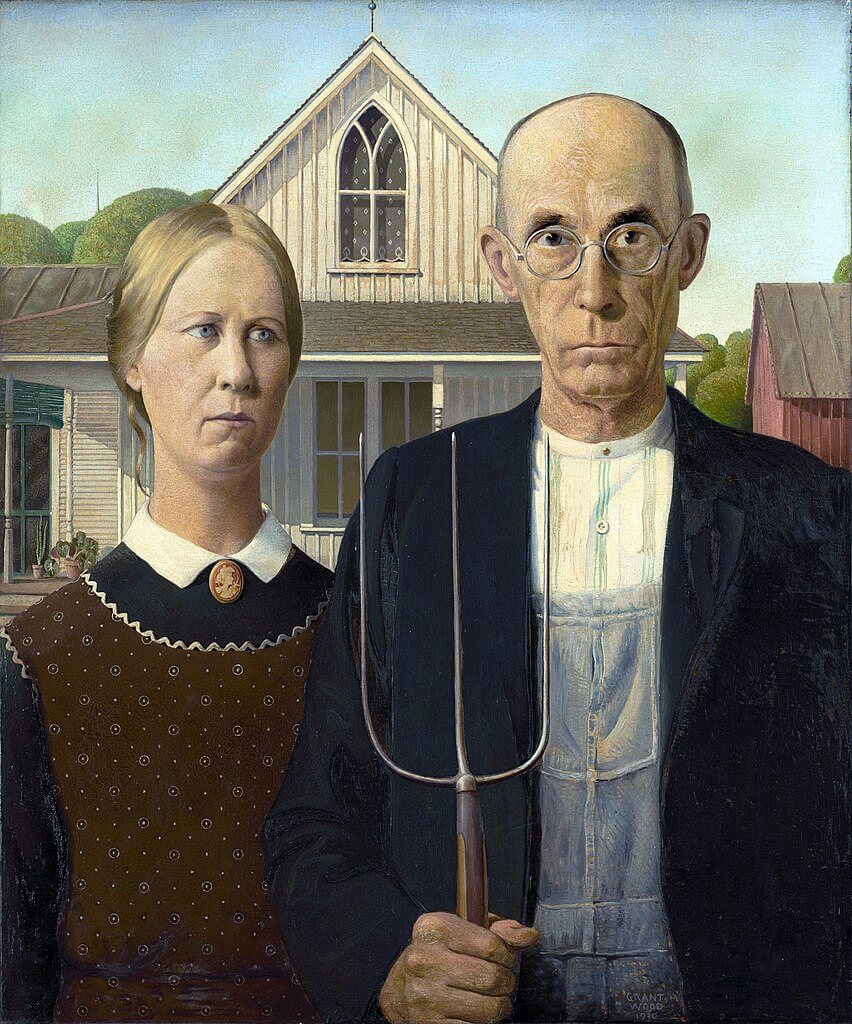
Grant Wood’s American Gothic
Multiple Focal Points
Sometimes, an artwork can have more than one focal point. This technique can create tension or balance within a composition.
In Velazquez's masterpiece "Las Meninas," your eye is drawn to two points: the small girl in her bright dress in the foreground, and the man in the background standing in the light. The two focal points create a dynamic interplay that adds depth to the painting.
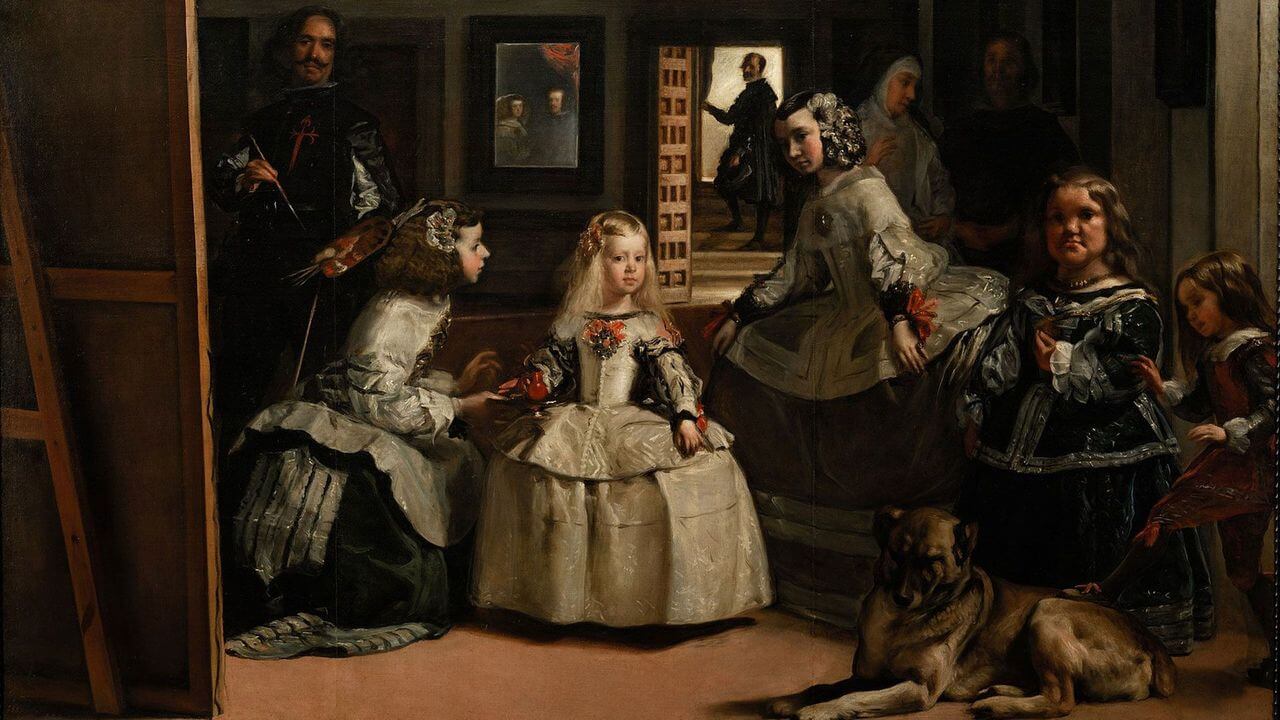
Las Meninas
Creating a focal point involves thoughtfully manipulating various elements of art. Whether it's through color, contrast, size, placement, lines, shapes, texture, or pattern, the goal is to guide the viewer's eye and enhance the overall impact of the artwork. Why? Because the focal point is the heart of visual storytelling, and it's what makes great art truly captivating.
Up Next
What is Movement in Art?
As we continue exploring the intricacies of art and its elements, let's delve into another fascinating aspect, the concept of 'Movement in Art,' to further understand how artists captivate our senses and guide our interpretations.
Up Next: Movement in Art →
Showcase your vision with elegant shot lists and storyboards.
Create robust and customizable shot lists. Upload images to make storyboards and slideshows.
